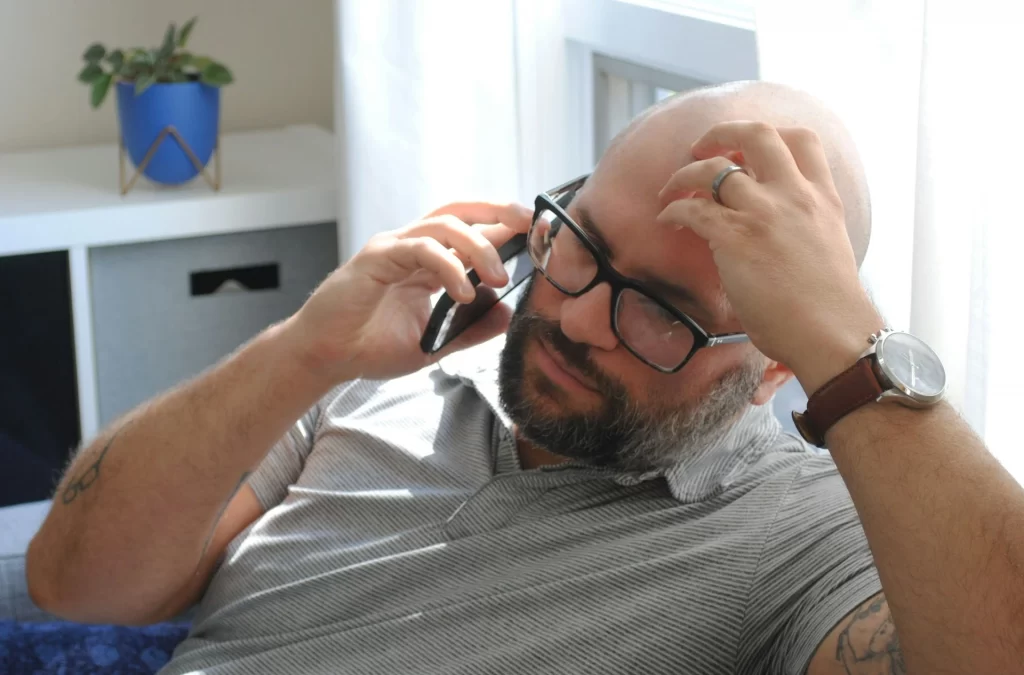The Silent Drain on Senior Living Finances
At the start of every billing cycle, senior living facilities enter a familiar but frustrating routine. The finance team is buried under a stack of invoices, paper checks, and spreadsheets that demand manual reconciliation. Residents’ families start calling in, confused about balances and due dates, looking for clarity on what’s owed and when. Meanwhile, administrative staff juggle data entry, error correction, and overdue payment tracking, hoping to prevent the cash flow delays that seem inevitable every month.
It’s a cycle that repeats itself, draining time and resources from facilities that should be focused on what truly matters—providing high-quality care and a seamless experience for residents and their families. Instead of operating with efficiency, many senior living communities find themselves locked into outdated financial workflows, losing valuable revenue and placing additional stress on their workforce.
Despite the widespread availability of digital payment technology, the reality is that 75% of businesses still rely on paper checks1. While checks may seem like a traditional, trustworthy method of payment, they come with hidden costs—delays in processing, an increased risk of errors, higher labor costs, and security vulnerabilities. These costs don’t just affect the bottom line; they also undermine the operational efficiency of senior living facilities, causing ripple effects that extend to residents, families, and staff alike.
For an industry already dealing with tight budgets, staffing shortages, and increasing regulatory requirements, the financial inefficiencies caused by manual payment processing are not sustainable. Yet, many senior living facilities continue to rely on outdated systems simply because it’s what they’ve always done. Change can feel overwhelming, especially when it involves integrating new technology into an already complex system. But the true cost of staying the same is often far greater than the cost of modernizing.
The hidden burden of manual payments extends beyond just lost revenue—it affects everything from staff retention to compliance to resident satisfaction. These inefficiencies compound over time, eroding financial stability and placing unnecessary strain on every part of the organization. When facilities fail to modernize their payment processes, they don’t just fall behind financially—they risk damaging relationships with residents, families, and employees.
To understand just how costly manual payment processing is, it’s essential to break down the inefficiencies and examine the impact on financial health, operational effectiveness, compliance, and overall facility morale. Only then can facilities make an informed decision about how to move forward—one that ensures long-term financial stability, operational efficiency, and a better experience for residents and their families.
Revenue Leakage: The Hidden Financial Pitfalls
For senior living facilities, financial predictability is crucial. Expenses—such as staffing, facility maintenance, and resident care—rely on consistent, timely payments from residents and their families. However, manual payment processing creates frequent delays and errors, making it difficult to maintain a stable cash flow.
Delayed and Missed Payments
Processing payments manually introduces significant delays. Checks must be received, opened, recorded, and deposited before funds become available. If a check is lost in the mail or misapplied to the wrong account, it can take days or even weeks to resolve. Meanwhile, the facility’s financial reports remain inaccurate, making it difficult to plan for expenses.
According to McKinsey’s 2023 Global Payments Report, organizations that switch to digital payment systems reduce revenue leakage by up to 30%. Digital payment platforms eliminate processing delays, prevent lost payments, and enable real-time updates to financial records, ensuring that every dollar owed is accounted for.
Increased Collection Costs
Late payments don’t just impact cash flow—they create additional costs for collection efforts. When families miss a payment, the facility’s administrative staff must:
- Send payment reminders, either by mail, email, or phone.
- Make follow-up calls to discuss outstanding balances.
- Initiate late fees or escalate unpaid balances to collection agencies.
Every hour spent tracking down missing payments is time that could have been spent improving resident care or streamlining other administrative processes. Worse yet, a frustrating billing experience can damage relationships with residents and their families, making them more likely to leave negative reviews or consider switching to another facility.
The Burden on Staff: Labor Costs and Employee Burnout
Manual payment processing doesn’t just cost the facility money—it wastes valuable staff time and increases employee stress.
Time-Consuming Payment Processing
Senior living facilities handle hundreds or even thousands of transactions per month. Each payment must be:
- Manually entered into multiple systems, increasing the likelihood of errors.
- Matched to resident accounts, which requires cross-referencing different records.
- Reconciled at the end of each month, delaying financial reporting.
This process is not only inefficient but also exhausting for finance teams. According to PYMENTS.com, finance departments spend up to 42% of their time manually managing payments—time that could be better spent on financial planning, compliance, and strategic decision-making.
Administrative Turnover and Staffing Struggles
High turnover is already a major issue in the senior living industry, with staffing shortages impacting both care teams and administrative staff. When employees are forced to spend hours managing tedious, repetitive payment tasks, it increases frustration and contributes to burnout.
Some of our client’s billing staff frequently report feeling the following before switching to an online payment portal:
- Feeling overwhelmed by administrative workloads.
- Spending more time on paperwork than improving financial strategy.
- Facing pressure from frustrated residents and families over billing mistakes.
The result? Increased turnover, which leads to additional costs related to recruiting, hiring, and training replacements. Every time a facility loses a finance team member, it must retrain new employees on outdated systems, causing further inefficiencies.
By eliminating manual tasks, facilities can reduce burnout, improve job satisfaction, and retain skilled administrative staff, keeping operations running smoothly.
Compliance Risks: The Hidden Dangers of Manual Processing
Senior living facilities must comply with a variety of financial and healthcare regulations, including:
- HIPAA (Health Insurance Portability and Accountability Act), which protects residents’ personal and financial data.
- PCI DSS (Payment Card Industry Data Security Standard), which ensures that payment information is handled securely.
- State and federal financial regulations, which require accurate and auditable financial records.
Security Risks of Paper-Based Payments
Paper checks introduce security risks at every stage of processing. Unlike encrypted digital transactions, which protect sensitive information with multiple layers of security, paper checks pass through multiple hands and can easily be lost, stolen, or forged.
Common risks associated with manual payment processing include:
- Check fraud, where bad actors alter check amounts or payee names.
- Lost or stolen checks, leading to unauthorized withdrawals from resident accounts.
- Unauthorized access to financial records, increasing the risk of data breaches.
Financial industry reports reveal that fraud incidents involving paper checks are five times more common than fraud related to digital payments. For senior living facilities which handle large volumes of transactions and sensitive financial information, the risk of fraud is even greater.
Auditing Challenges and Compliance Failures
Manual payment processing complicates financial audits and increases the risk of compliance violations. In an audit, facilities must provide:
- A complete transaction history, showing when payments were received and applied.
- Accurate reconciliation records, ensuring all payments match outstanding balances.
- Securely stored financial data, meeting PCI and HIPAA requirements.
In a paper-based system, this process is slow, manual, and prone to errors. Finance teams must sort through physical files, track missing payments, and manually reconcile records, which can take weeks.
By contrast, automated payment solutions provide real-time transaction logs, digital audit trails, and secure financial reporting tools, making compliance easier and reducing the risk of costly penalties.
The Resident and Family Experience: A Frustrating and Stressful Payment Process
For residents and their families, senior living is not just a service—it’s a home, a relationship, and a significant financial commitment. The decision to move a loved one into a senior care facility is often an emotional and complex one, involving trust, transparency, and long-term financial planning. Families want to feel confident that their loved one is receiving the best care possible, and part of that confidence comes from knowing that financial matters are handled smoothly, accurately, and transparently.
Unfortunately, manual payment processing disrupts this trust. Instead of offering a clear, convenient, and seamless financial experience, outdated payment methods create frustration, confusion, and uncertainty for residents and their families. Paper invoices get lost in the mail, checks take days or weeks to clear, and unclear billing statements make it difficult for families to track expenses. These inefficiencies don’t just lead to delayed payments—they create unnecessary stress and tension between families and the facility, weakening the sense of security and reliability that senior living communities should provide.
Confusing and Inconvenient Payment Methods Create Unnecessary Stress
Unlike industries where transactions are straightforward and predictable, senior living payments are highly nuanced. Many residents rely on family members, financial caregivers, or power of attorney representatives to manage their finances. These individuals are often juggling multiple responsibilities, including their own work schedules, personal obligations, and other financial commitments. The last thing they need is a complicated, outdated payment system that makes it harder to stay on top of their loved one’s financial obligations.
Yet, in many facilities, that’s exactly what they face. Manual, paper-based payment systems force families to rely on slow, outdated methods that don’t align with the way they manage their finances in other aspects of their lives. In an era where 82% of consumers now prefer digital payments, senior living facilities that still require checks, mailed payments, or in-person processing are putting unnecessary roadblocks in place.
Imagine a daughter managing her mother’s care from another state. She’s already navigating the emotional and logistical challenges of ensuring her mother receives the best possible care, all while balancing her own job and family responsibilities. When her mother’s senior living facility requires her to mail a paper check every month, with no online payment option, it adds another layer of stress to an already overwhelming situation.
Or consider a family that has multiple siblings contributing to their father’s senior living costs. Without an online portal that allows them to easily split payments or set up automated transactions, they’re left coordinating among themselves, writing multiple checks, and ensuring payments are submitted on time. If an error occurs or a payment is delayed due to mail issues or bank processing times, late fees might be imposed, even though the family had every intention of paying on time.
These types of avoidable payment frustrations don’t just cause delays—they create anxiety and resentment. Families want to feel that their senior living facility is working with them, not against them, in managing financial responsibilities.
Lack of Transparency in Billing Leads to Disputes and Mistrust
In many senior living facilities, billing statements are not as clear as they should be. Families often receive invoices that lack detailed breakdowns of charges, making it difficult to understand exactly what services were billed for and why. When manual data entry is involved, errors are more common, leading to incorrect balances, duplicate charges, or missing payments.
Without real-time access to billing statements and payment history, families lack the transparency needed to confidently manage finances. This often results in disputes, extra phone calls, and frustration, placing additional strain on both the family and the facility’s administrative team.

For example, a son handling his father’s finances might receive an invoice that seems higher than usual, but with no clear explanation of additional charges. He calls the facility for clarification, only to find that the billing team needs time to manually review records, cross-check payments, and verify service charges. This back-and-forth communication delays resolution and increases frustration, making the family question whether the facility is handling financial matters competently.
Billing clarity is not just about preventing disputes—it’s about building trust. Families entrust senior living facilities with their loved ones’ care, and that trust extends to financial matters as well. When facilities provide clear, accessible, and transparent billing, it reassures families that their payments are accurate, secure, and handled professionally. But when billing is confusing, inconsistent, or prone to errors, it raises red flags that can damage the facility’s reputation and credibility.
A Better Resident and Family Experience Starts with Smarter Payment Processes
A senior living facility’s relationship with residents and families is built on trust, communication, and reliability. Financial management is a core part of that relationship. When payments are difficult to track, invoices are unclear, and payment methods are outdated, it creates unnecessary friction that erodes trust.
For families, the process of managing a loved one’s senior living expenses should be as simple and stress-free as possible. They are already navigating complex healthcare decisions, emotional transitions, and significant financial commitments—billing confusion and payment delays should not be another burden they have to manage. When a facility offers clear, transparent, and accessible payment options, families feel more in control, informed, and reassured that their loved one’s financial matters are being handled professionally.
By modernizing payment processes, facilities can:
✔ Provide families with convenient digital payment options, reducing stress and confusion.
✔ Ensure billing transparency, eliminating disputes and unnecessary follow-ups.
✔ Offer real-time payment notifications and reminders, preventing avoidable late fees.
✔ Strengthen relationships with residents and families, reinforcing trust and confidence in the facility’s operations.
Upgrading to a modern, automated payment system isn’t just about streamlining internal processes—it’s about enhancing the overall experience for residents and their families. Senior living facilities that prioritize financial clarity and payment convenience position themselves as trusted, professional, and resident-focused communities.
At the end of the day, the goal of any senior living facility is to provide the best possible care—and that includes reducing financial stress for families. A facility that embraces modern payment solutions not only improves efficiency but also fosters stronger, long-term relationships with the families they serve.
The decision to modernize payments isn’t just a financial one—it’s a commitment to better service, stronger trust, and a superior resident experience. The question is: How long can your facility afford to wait before making this critical change?
- https://www.pymnts.com/digital-payments/2024/75percent-companies-still-use-paper-checks-despite-high-cost/









